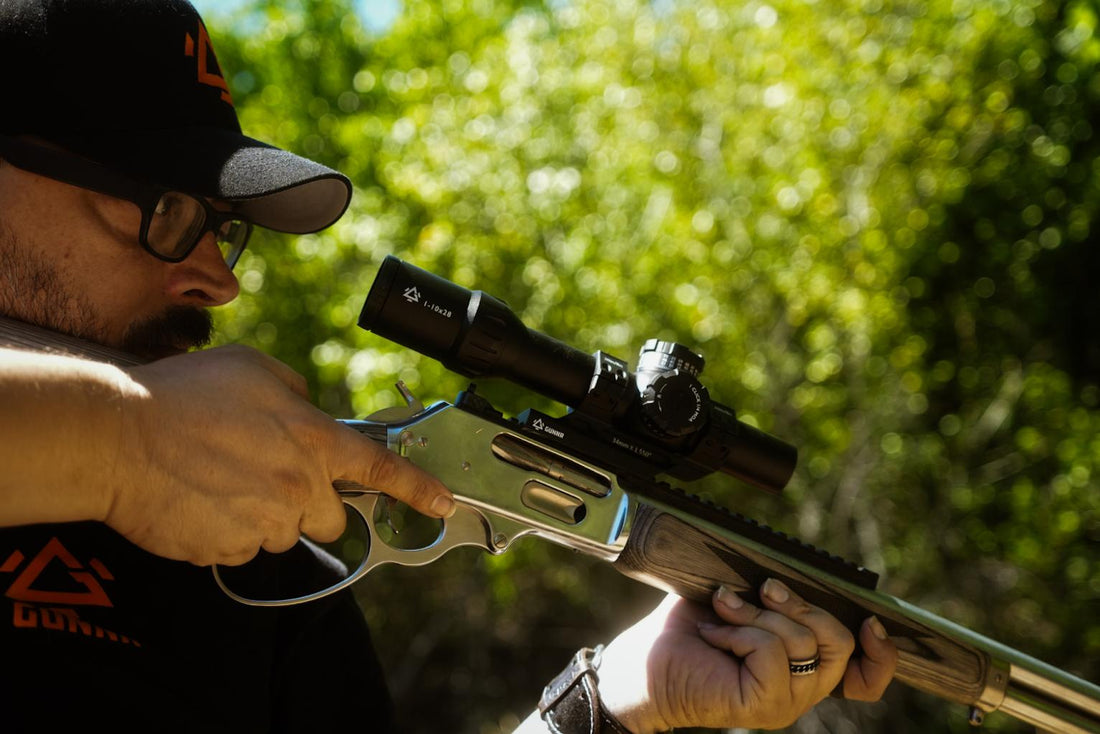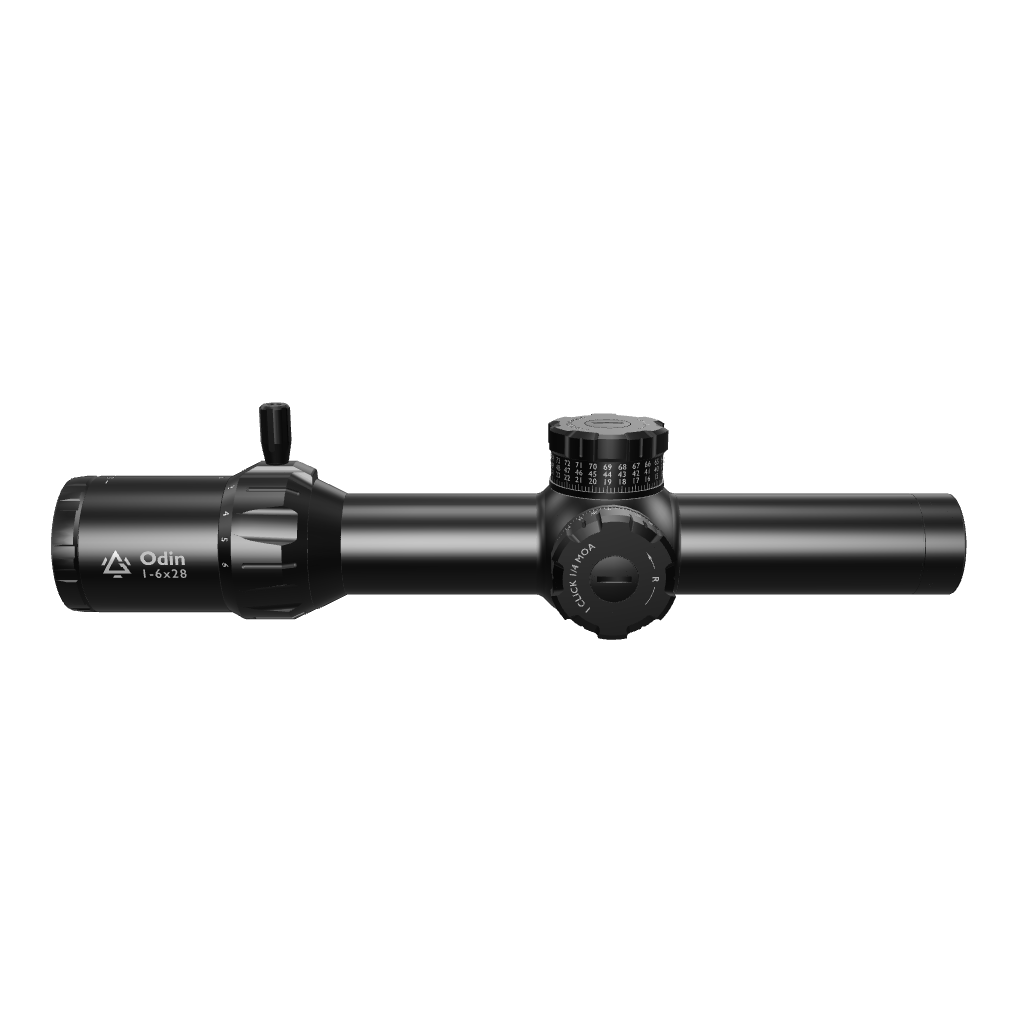Why Your Scope Keeps Losing Zero (And How to Fix It)
1. Mounting Issues (Torque, Alignment, & Materials)
There is no way you will achieve and secure zero if your optic is not properly mounted in a way that is physically secure and precisely aligned. Even slight shifts in your base, rings, or rail slot can throw off your zero.
Learning how to mount an optic involves mastering a number of small tasks that must come together perfectly. Here are 5 common mounting issues that might result in your scope losing zero:
- The scope rings are not properly torqued. Ring torque should be 15-20 in-lbs for most scopes. Overtightening them can crush the tube, and under-tightening will allow slippage.
- The base is not well torqued. Picatinny rail screws (to receiver) typically require 30-65 in-lbs, depending on your rifle.
- The scope is not well-positioned in the rings. If the scope is sliding or rotating, it’s not secure, and your scope may keep losing zero..
- The rails might be out of spec. This is a common problem, especially on budget AR uppers, and it can allow minute movement, which would distort your zero.
- The rings might be overlapping. On a precision rifle, you need to lap the rings to ensure your scope is snug and secure, but misaligned rings stress the tube and might shift POI over time.
How to Fix Mounting Issues
- Use a torque driver (Wheeler FAT Wrench, Fix-It Sticks).
- Apply blue threadlocker (Loctite 242) to base screws.
- Consider replacing budget rings with monolithic mounts (especially on AR platforms).
2. There Might Be Some Internal Failure
If everything appears perfect, yet your scope keeps losing focus, there is likely down to some kind of internal failure. The internal erector assembly might be loose or damaged, and this would cause the reticle to drift inside the scope.
This mostly happens with heavy recoil rifles (where the recoil springs get broken due to heavy recoil), or if you're moving and shooting in extreme temperature swings (extreme temperature swings cause the reticle to shift)
Do a box test (fire 5-10 shots in a square pattern using turret adjustments). If the reticle doesn’t return to the original zero, your tracking is off. You can test for a wandering reticle by tapping the turrets gently after each adjustment.
How to Deal With Internal Scope Failure
You really cannot fix internal scope failure, at least not on your own. One measure you can take is to upgrade to an optic with a robust warranty. This is the special advantage of brands that offer a sufficient warranty for their products.
For all of Gunnr’s ODIN LPVOs, you get a lifetime warranty. With a compact internal design, a first focal plane (FFP) reticle to provide fast, accurate distance estimation at any magnification, and six brightness settings for adapting seamlessly to changing light conditions, you are not likely to fall into any internal issues at any time.
3. Your Mounting Position is Inconsistent.
On platforms like ARs with modular optics or QD (quick-detach) mounts, you must re-mount in the same rail slot every time. Even a 0.002" shift on the rail can mean multiple inches of POI change at 100 yards. Changing your mounting position may cause your optic to lose focus.
Here are some common mounting mistakes to avoid:
- Mounting your optic in different Picatinny slots after cleaning or transport
- Not locking down the QD lever all the way
- Not returning to the same torque spec every time
How to Fix Inconsistencies in your mounting position
- Mark your designated rail slot with a small dot or engraving.
- Only use quality QD mounts (ADM, Bobro, LaRue)
- Always mount with the same tension and torque
With Odin scopes, figuring out the proper mount should not be an issue. First, all three Odin scopes have a main tube length of 34 mm. A mount that fits one should fit all. You get a top-grade Sleipnir 30-34 mm Cantilever mount, which is reliable and durable. This means your Sleipnir mount will work perfectly, irrespective of the model you get.
4. There Might be a Recoil-Induced Shift of the Scope
With each shot, your optic endures a shockwave of energy, and over time, this can loosen screws, slide rings, or even shift the scope within the rings. When this happens, the scope starts creeping forward or backward in the rings, or the zero slowly walks in the direction of recoil
How to Fix This Problem
- Use rings with vertical grips for better hold (e.g., Warne Maxima)
- Check for internal ring burrs that prevent full contact
- Degrease the scope and rings before mounting
Avoid rings with plastic inserts unless the torque is perfect, as they often deform.
5. There Might Be Rifle or Barrel Stress
Sometimes it’s not the optic itself but the action, stock, or barrel that causes your optic to lose zero. Excessive heat can cause barrel whip or thermal expansion, shifting POI.
Free-float handguards will cause shifts in zero if they still touch the barrel under pressure
Sling pressure on the handguards that flex into the barrel
Inlet pressure points in the stock are causing action warping
How to Fix This Problem
- Free-float the barrel fully
- Verify that there is no contact between the handguard and barrel/gas block
- Pillar bed bolt-action rifles, if they are not already bedded
- Use torque wrenches on action screws (e.g., 35–65 in-lbs depending on rifle)
6. Environmental Factors (Long-Range Effects)
If you’re shooting past 200 yards, temperature, elevation, and ammo batch can affect zero. Hot barrels expand and change harmonics. Air density at high altitudes alters bullet drop. Even changing from 55gr to 62gr .223 can cause different POI.
How to Minimize the Impact of Environmental Factors
- Always zero with the same ammo you plan to use
- Record temperature and elevation data
- Let the barrel cool when zeroing for groups
- Use ballistic calculators (Strelok Pro, Hornady 4DOF).
Look for shockproof, waterproof, and fog-resistant designs. Not every LPVO is like the ODIN 1-10x FFP LPVO, which has an IP67 water resistance rating and will still offer a robust performance even if you shoot in temperatures as low as -59°F or as high as 149°F.
Final Checklist: Diagnose and Fix Scope Zero Issues
Here’s your full diagnostic checklist:
- Torque mount screws and ring caps to spec
- Verify the scope tube isn’t slipping in the rings
- Confirm internal scope tracking with a box test
- Check rail slot consistency and QD tension
- Inspect barrel or handguard for pressure shifts
- Monitor ammo, temperature, and altitude.
All in all, the best way to prevent your optic from constantly losing zero is to begin by acquiring a good quality optic. For LPVOs, look no further than Gunnr for a quality option at a price that does not break the bank and a lifetime warranty.
You might also be interested in our guide on why your optic keeps losing focus







